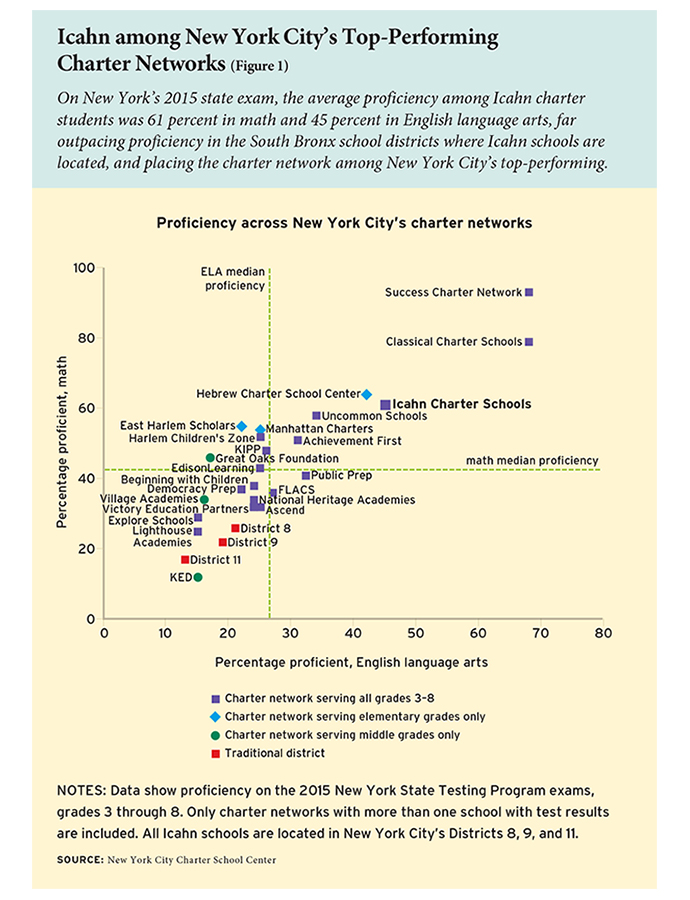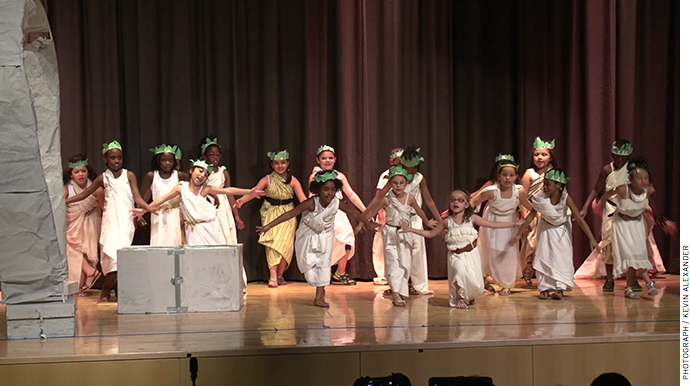
Donald Trump could learn much about the beautiful culture and rich history of Mexico from the 1st graders in Angela Napoletano’s class at Icahn Charter School 3 in the South Bronx. The day I visited her class, students were busy working on a Diego Rivera–style mural, each section representing a unique aspect of Mexican culture. When I told them that I had traveled some in Mexico, the room exploded with curiosity.
“Have you been to Chichén Itzá?” one boy asked, jumping out of his seat. “Were you there on the Day of the Dead?” a girl excitedly inquired. Another boy, noticing the colorful striped skirt worn by school principal Marcy Glattstein, said, “Look, Mrs. Glattstein’s dress looks like a China poblana!” (a type of traditional Mexican dress). I nearly fainted when a girl correctly pronounced the ancient Aztec name for Mexico City, Tenochtitlán (tĕ-nōch-tē-tlän).
None of these children were Mexican or had ever been to Mexico. Yet these 6-year-olds knew more about our neighbors to the south than the majority of American adults, and possibly more than many Mexican adults. When I recounted this story to Jeff Litt, superintendent of Icahn’s network of seven charter schools, he was unsurprised. “Learning about history, other cultures, other countries—these subjects are fascinating to children,” Litt remarked.
Litt understands the importance of content-rich curriculum, especially for children from disadvantaged backgrounds. In the late 1980s, he was principal of one of New York’s most dysfunctional schools: P.S. 67, in the South Bronx. (The day before Litt arrived, a teacher was wounded in a shootout.) Litt renamed it the Mohegan School (after its street location) and fought hard to turn it around, replacing much of the teaching staff and rehabilitating the building.
But Litt’s breakthrough came two years later, when he attended a forum sponsored by the Center for Educational Innovation (CEI), then part of the Manhattan Institute. A featured speaker was the education scholar E. D. Hirsch, whose surprise bestseller Cultural Literacy had appeared a few years earlier. Litt was mesmerized as Hirsch explained how providing children with background knowledge on a wide variety of topics—history, literature, geography, science, art, and music—was key to building successful readers and learners.
“I was thunderstruck. He described exactly what I had always wanted: to offer kids a rich, broad knowledge of the world,” Litt recalls. Hirsch had recently launched the Core Knowledge Foundation to develop curricular material; Litt immediately decided that he wanted to employ the curriculum in his school. Hirsch referred him to Three Oaks Elementary in Fort Myers, Florida, the first school in the nation to implement Core Knowledge. When a Three Oaks administrator visited Mohegan, he told Litt that the curriculum wasn’t “well suited” for the school’s low-income, minority students. Undeterred, Litt decided to implement Core Knowledge anyway.
The next year, Litt invited Hirsch to see how Core Knowledge was working in the South Bronx. Legendary New York educator Sy Fliegel, the longtime president of CEI, was there, too. “We stopped in a classroom where the music teacher was giving a lesson,” Fliegel recounts. “She played Beethoven’s Funeral March, and asked, ‘Who knows why Beethoven included a funeral march in this symphony?’ A little Puerto Rican girl, a 3rd grader, raised her hand and said, ‘Well, Napoleon had declared himself emperor, so Beethoven may have felt that democracy had died.’ After we picked up Don Hirsch off the floor, he declared Mohegan the national urban-center Core Knowledge model.”
Hirsch and Litt still hold each other in the highest regard. “Nobody in American education deserves recognition more than Jeff Litt,” Hirsch remarks. Meanwhile, Litt proclaims: “Don Hirsch is my hero.”
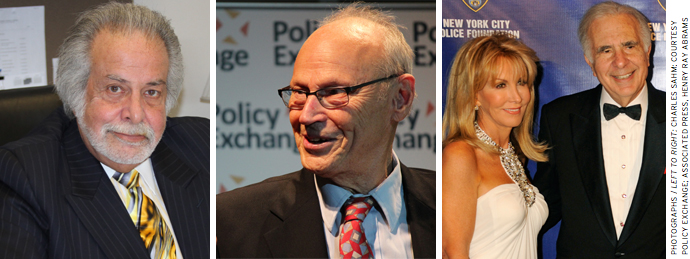
Breaking Cycles of Poverty
In the 1980s, billionaire financier Carl Icahn and his wife, Gail, opened Icahn House, a large transitional-housing facility in the South Bronx, then and now the country’s poorest congressional district. “Through our work at Icahn House, it became clear that you can’t break cycles of poverty if kids don’t get a high-quality education,” Gail Icahn says. “As soon as Governor Pataki got the charter law through, we decided to open a school.”
Fliegel introduced Litt to the Icahns, and Litt helped write the charter application. In 2001, the Icahns asked him to be principal of the new school and gave him great freedom in designing it. Litt again used the Core Knowledge curriculum, and he hired the best teachers he knew. A modular-construction company built the school on land the Icahns had purchased across from their housing facility. “The school came over the George Washington Bridge on twenty-two tractor-trailers,” Litt recalls. In September 2001, the school opened as one of the first charters in New York State.
By 2004, Icahn 4th graders were posting higher test scores than students in any other school in the Bronx, save for a couple in the affluent Riverdale section. In 2006, the network joined with the nonprofit Civic Builders to construct a 125,000-square-foot building in the Mott Haven neighborhood of the Bronx to house Icahn 2 as well as a district school. Over the next several years, the Icahn network expanded to a total of seven schools. Typically, Icahn charters open as K–2 schools and add a grade each year as students move up. Icahn 1 through 4 are now full K–8 schools, and the other three are expected to follow suit within a few years.
The Icahn network is still small, serving a total of 2,100 students. This year, more than 22,000 students applied to Icahn (many via the city’s online common application) for 252 spots. “It breaks my heart to turn so many kids away,” says Litt, who became the network’s superintendent in 2008.
On New York’s Common Core–aligned exams in 2015, 45 percent of Icahn students in grades 3–8 scored proficient in English; 61 percent were proficient in math. These results surpass the city’s overall 30 and 35 percent, respectively, and far outpace the two South Bronx school districts where most Icahn schools are located: District 9 (13 percent proficient in English, 17 percent in math) and District 11 (21 percent and 26 percent). Two schools—Icahn 2 and 4—recently received the coveted National Blue Ribbon Schools award.
While Icahn’s test scores aren’t as eye-popping as those of Eva Moskowitz’s renowned Success Academy (Success boasted proficiency rates of 68 percent in English and 93 percent in math), the Icahn network also seems to emphasize the tests slightly less. Icahn students receive test-prep via the online i-Ready program, which offers diagnostics and adaptive instruction. They are encouraged to log on to i-Ready at home and after they complete assignments in class.
Icahn also administers the venerable Iowa tests each June, and students are given other network-created assessments throughout the year. Children who don’t score well spend 45 minutes daily in small groups outside class for targeted assistance and come in for “Saturday Academy” extra-help sessions.
Seventy-seven percent of Icahn students receive free or reduced-price lunch, compared with 79 percent for city schools overall; 6 percent of Icahn students receive special-education services, compared with 17 percent for the city; 5 percent of Icahn students are English-language learners (ELL), compared with 14 percent for the city. Icahn officials note that they lack space to serve students with significant disabilities requiring self-contained classes and that the network often classifies children with milder disabilities as general-education students.
Charter School Outlier
In some ways, Icahn schools resemble other successful charters: the school day is longer than at district schools, running from 8:30 a.m. to 4 p.m., and the school year extends to mid-July. Students wear uniforms, and the school culture is one of high expectations.
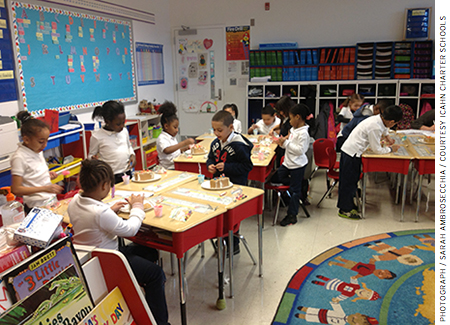
creating their own covered wagons out of edible materials as they learn about how pioneers traveled.
In other respects, though, Icahn is an outlier, and the differences start with Litt himself. Unlike many in the New York charter community, Litt’s roots in the New York City schools run deep. Raised in the Bronx, Litt, now 67, attended New York City public schools and earned graduate degrees from City College and Columbia’s Teachers College. He spent 33 years in the public school system as a teacher, assistant principal, and principal.
Litt often gets choked up talking about “my kids.” His warm, nurturing attitude seems to permeate the schools: teachers tend to call younger students “honey” or “sweetheart.” When asked what’s distinctive about Icahn schools, Michelle Allen, principal of Icahn 4, replies: “Genuine love for the children. Genuine respect for the staff from the leadership.” Referring to the red tape and often maddening work rules she faced as principal of a district school, Icahn 3 principal Marcy Glattstein notes: “Coming from the DOE, what I appreciate most about Icahn is that it’s human. It’s about teaching and learning.”
At Icahn, teachers tend to be a bit more experienced than at the typical charter, reflecting Litt’s conviction that “teaching should be a real profession, not something you dabble in for a year or two.” All teachers are certified before they begin teaching, and all senior staff have had long careers in the New York City school system. Icahn has a strong partnership with nearby Lehman College’s school of education, where many of its teachers have studied. Teachers attend a week of professional development sessions before classes start in September, and new teachers receive ongoing support from veteran teachers and principals.
As in most charters, Icahn teachers are nonunion. Recent changes in Icahn’s sick-leave policy have teachers grumbling, and a couple dozen left last summer. While pay and benefits are competitive with what less-experienced teachers receive in district schools, Litt finds it tough to match the generous pay and pension benefits that veteran district teachers get. Teachers who stay, however, value Icahn’s warm, orderly school environment and small class sizes.
Class size represents a major difference between Icahn and many other schools (charter and district). Icahn never exceeds 18 students per class, in contrast to the district-school averages of 25 (elementary school) and 27 (middle school).
And unlike charter networks that rely heavily on outside philanthropy, Icahn schools run solely on the roughly $14,000 the city provides annually for each student (amounting to about $250,000 per classroom). “We get about 75 percent of what district schools get,” Litt notes. “We’re the best bargain in town.”
While one of the Icahns’ private foundations has provided millions of dollars to build and renovate the network’s schools, the Icahns require the schools to operate on the funding the city provides. Julie Goodyear, longtime director of the foundation, explains that they save a lot by eliminating assistant principals and other middle management. “We’re a lean organization,” Goodyear says. “That saves money but also brings everyone closer to the students.”
The Icahn network also stands out in regard to student attrition and suspensions. WNYC public radio recently conducted a comprehensive analysis of student attrition at New York City charter schools and found that attrition rates are generally lower at charters than at nearby district schools. Icahn’s rate was among the lowest. According to WNYC, Icahn’s attrition rate for the 2013–14 school year was 8 percent for elementary school grades and 5.4 percent for middle school grades, compared to an overall rate of 13 percent in traditional public schools.
When students do leave Icahn, they’re quickly replaced. Unlike some charters that don’t take in new students after the 3rd or 4th grade, Icahn schools accept a child off their waiting list whenever a seat opens up, through the beginning of 7th grade. (Given Icahn’s lean budget, the network can’t afford not to “backfill” in this way.) This practice probably depresses the schools’ test scores somewhat—students from district schools often have catching up to do—but it gives more students access to a high-quality education.
As for suspensions, some New York charters have been criticized for suspension rates far above those of the district. According to state data, in 2014 city charters suspended 9.4 percent of students, compared to 3.4 percent in district schools. Among all seven Icahn schools, only 10 students were suspended that year. Icahn 5 principal Lawford Cunningham credits the low suspension rate to strong parental engagement and “mutual respect” between parents and teachers. “We’re a team,” notes Cunningham.
Content Reigns
Icahn is among the city’s best-performing charter school networks, trailing only Success Academy (see “What Explains Success at Success Academy?” features, Summer 2015) and another newcomer, South Bronx Classical, now with three schools in the Bronx (see Figure 1). What do these top networks have in common? All three emphasize coherent, content-rich curriculum.
At Icahn, math teachers use a combination of two programs, enVisionMATH and Eureka Math. Teachers introduce a topic using enVision and then dive into Eureka because it “increases the level of rigor” and “contains a great deal of student work and teacher support,” 5th-grade teacher Amanda Telesco says. Icahn also works with the New York City Mathematics Project, a program sponsored by Lehman College through which veteran retired math teachers offer in-class support and serve as consultants. One consultant told me that Eureka is “the best curriculum I’ve seen in thirty years.” The Math Project, which emphasizes problem-solving, inquiry-based mathematics, has been working with Icahn for 14 years. The organization’s director, Suzanne Libfeld, praises Icahn, calling it “a rigorous academic program that provides a caring environment for all its kids.”
Icahn also partners with the organization Teaching Matters to improve student writing via the group’s “Writing Matters” program. Teaching Matters consultants help teachers guide students through multi-week units on various types of writing: memoir, poetry, book reviews, editorial, and fiction. Students develop writing skills as they generate ideas, and organize, compose, revise, and publish their work online. “In college and in the workforce, students will be judged primarily by how effectively they can communicate in writing,” notes Teaching Matters’ senior educational coach Jelbin DeLaCruz.
Students in teacher Renee Reiland’s 6th-grade class at Icahn 5 were focused on their fiction writing the day I visited. They had worked on plot and character and were now putting the finishing touches on their stories. One story involved a basketball player whose team lacked athletic ability and had to work hard to overcome obstacles to become the best team in the league. Another was about a boy whose mother made him take ballet, which led to his being bullied. (The boy outsmarts the bully in the end.)
About half of Icahn’s English language arts curriculum is based on the Core Knowledge sequence; the other half is developed by teachers and principals. Decoding skills are emphasized in early grades, but as early as kindergarten, students are simultaneously exposed to lively collections of stories, poetry, and fables. English instruction comprises guided reading, read-aloud, shared text, and independent reading. All major subjects at Icahn have 90-minute blocks rather than the usual 45 minutes. Teachers spend about half the time on group instruction and the rest working with students individually or in small groups.
In one 3rd-grade class I visited at Icahn 3, the teacher was reading the Roald Dahl novel Matilda (an above-grade-level text) aloud while students followed along with their own copies of the book. The class read a chapter together each day, discussed the book, answered comprehension questions, and practiced writing from the viewpoint of various characters in the novel. The teacher hung a new poster in the classroom daily, containing vocabulary from that day’s chapter, words like “diabolical” and “indelible.” At semester’s end, students were rewarded with a trip to see the musical Matilda on Broadway.
At Icahn, all students in all grades are taught history, science, geography, literature, and the arts. “Unlike in traditional schools, my kids are getting science and social studies five days a week,” notes Litt. I toured one art class where students were learning the finer points of drawing the human face from an artist. In another, students were practicing ballroom dancing.
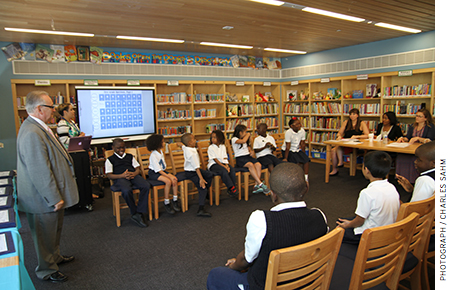
Icahn students study Spanish in 7th and 8th grades. About half of Icahn’s 8th graders take New York State’s challenging high-school Regents Examinations in integrated algebra and living science. Almost all pass.
The emphasis on core knowledge (both the curriculum and the broader concept) is manifest at Icahn schools. Students do a monthly Core Knowledge essay, project, and class presentation. The network runs an “Education Super Bowl” at year’s end, with students fielding questions ranging from “Which continent has panda bears?” in kindergarten to “Aristotle divided the means of persuasion into which three categories?” in 8th grade.
At each school, students from kindergarten through 7th grade give an end-of-year Core Knowledge performance. (Eighth graders perform a Shakespeare play, aided by professional actors.) I attended the Core Knowledge performance at Icahn 2 in 2015, and am embarrassed to admit that my knowledge of ancient Egypt, Greece, and Rome pales in comparison to that of Icahn 1st, 2nd, and 3rd graders.
High School and Beyond
The Icahn network takes great care to ensure that graduates move on to strong high schools. With about 400 public high schools in New York City, students have a bewildering array of choices. Icahn, starting in 7th grade, provides students with materials and questionnaires to help students and parents winnow their options.
Guidance counselors help students prepare applications and financial-aid forms, organize school tours, and hold mock interviews with students. They also help students prepare for New York’s specialized high-school admissions exam. Students interested in private schools are referred to Prep for Prep, the nonprofit that helps place promising inner-city students in independent boarding schools. A handful of Icahn students are now enrolled at elite private schools on full scholarship.
All this work pays off. Of the roughly 275 Icahn graduates in 2014, 2015, and 2016 (only the first four Icahn schools have had graduating classes so far), 17 students have been accepted at New York’s selective-admissions exam schools such as Bronx Science, Brooklyn Tech, and Brooklyn Latin, defying a trend that has seen fewer and fewer black and Latino students admitted to these elite academies. Other popular choices are so-called screened schools like Bard High School and the Manhattan Center for Science and Mathematics, which rank applicants on various criteria, and innovative charters such as the Charter High School for Law and Social Justice. Interestingly, about 20 percent of Icahn graduates have gone on to Catholic high schools, including Fordham Prep, Regis, Cardinal Spellman, and Saint Catherine’s.
“We arm our students with the skills and knowledge to participate in the most rigorous academic environments,” Litt says, noting that the ultimate goal isn’t a score on a state exam but “putting kids on the path to fulfilling, productive lives.” He sees content-rich curriculum as the best means of accomplishing that goal. “For children to be successful as adults, they need a baseline of knowledge so they’ll be able to communicate, understand a story in the New York Times, to someday write an article for the New York Times!” Litt adds. “People talk about critical thinking. You cannot think critically if you don’t have something to think about; knowledge matters.”
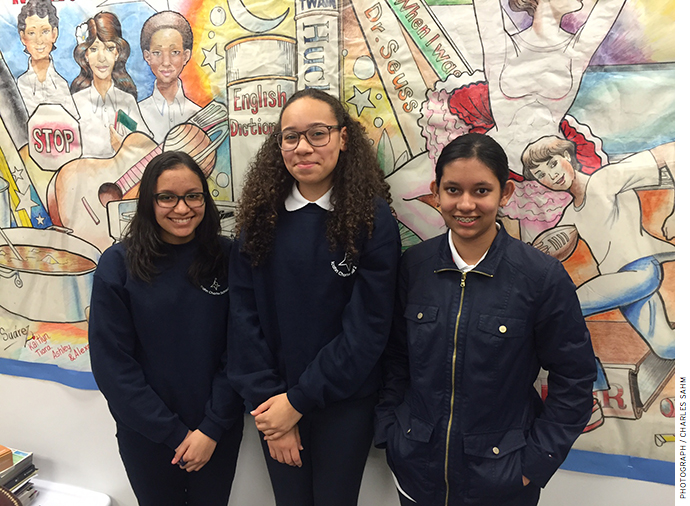
Speaking with some of the graduating 8th graders at Icahn 2 (who took time out from rehearsing Much Ado About Nothing to talk with me) leaves no doubt they’re well armed with the knowledge and habits of mind and character to succeed in any environment. Aaliyah Vega, who’ll be attending the elite boarding school Lawrenceville Academy, credits her success to Icahn’s emphasis on the arts. “The plays interact with what we learn throughout the year, as well as helping us to get out of our comfort zone by allowing us to play different roles and have fun with acting and drama,” she says.
Shaira Ahmed, who’ll be attending the Bronx High School of Science, alma mater to more Nobel Prize winners than any high school in America, credits Icahn’s small size and classes. “Teachers help you one-on-one. It’s like a family. They know you. They understand you,” she says, adding that at Icahn, “they care more about the students than the students’ test scores.” Kaitlyn Romanger, who is also heading to Bronx Science, jokes that she’s not worried about the demands of the elite high school because “ever since kindergarten, they’ve given us so much homework.” Kidding aside, she notes that Icahn “really improved my work ethic.” By the way, Kaitlyn’s favorite class is English. Her favorite book? Great Expectations.
Charles Sahm is education policy director at the Manhattan Institute for Policy Research.
This article appeared in the Fall 2016 issue of Education Next. Suggested citation format:
Sahm, C. (2016). The Bronx is Learning: Content-rich curriculum drives achievement at Ichan charter schools. Education Next, 16(4), 8-14.


